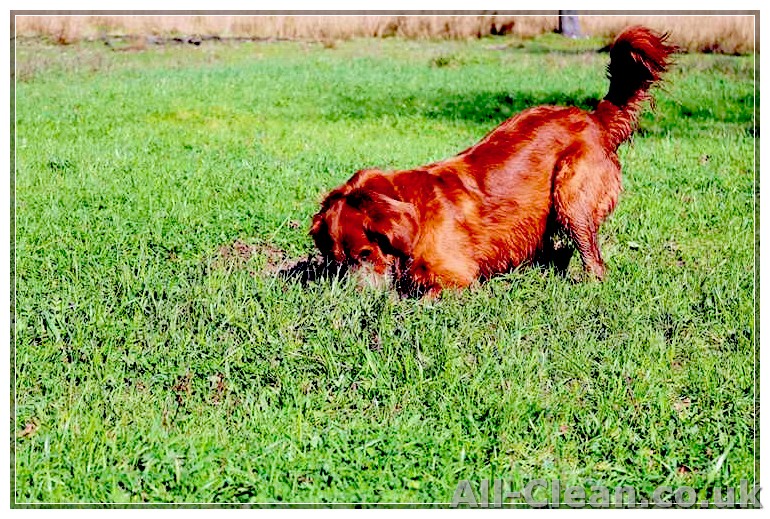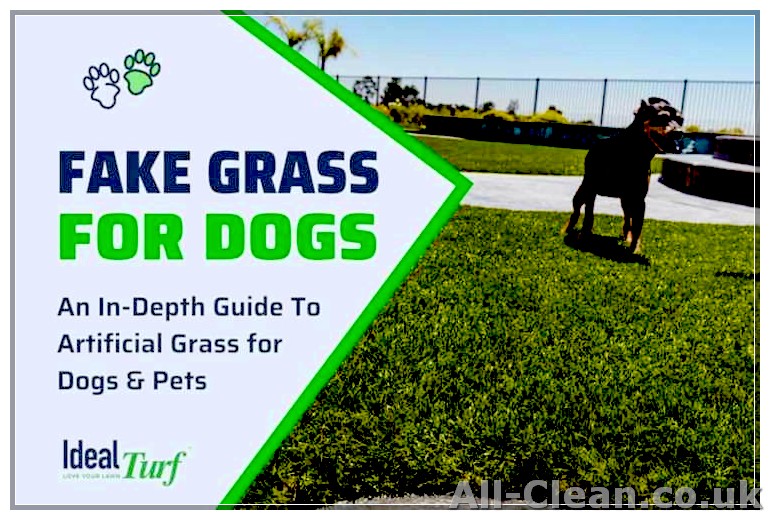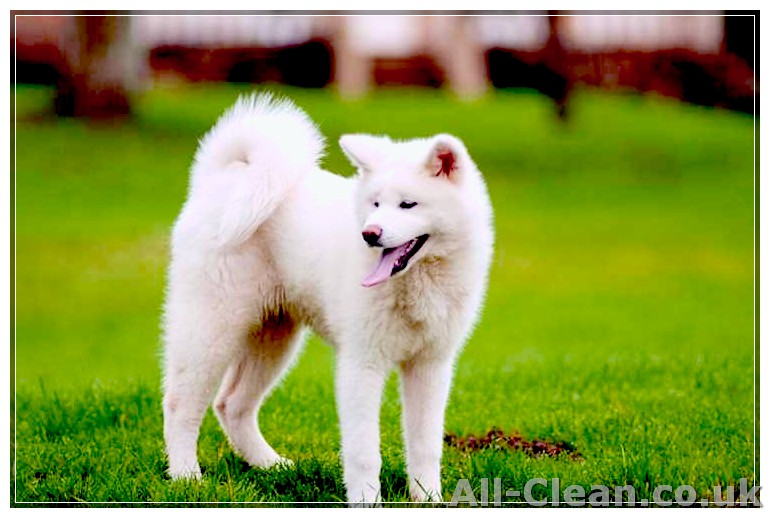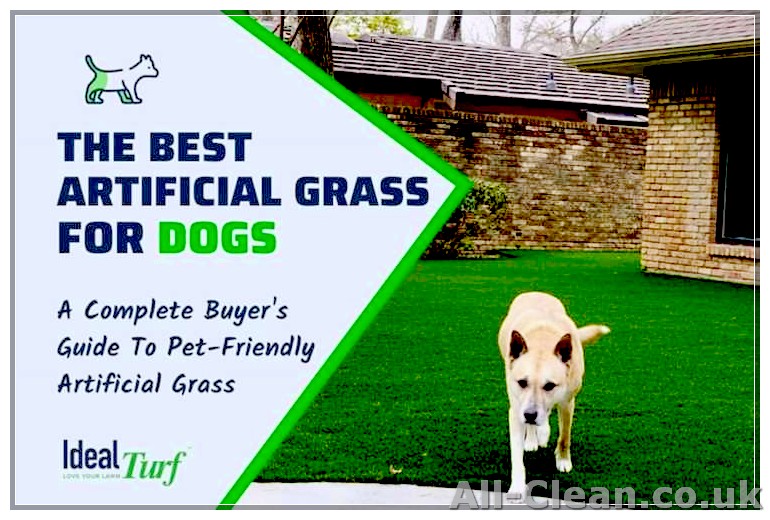
When it comes to creating a pet-friendly outdoor space, choosing the right type of grass is essential. Dogs are known for their energetic behavior and love for playing outside, so it’s important to have a hard-wearing lawn that can withstand their activities. Owners want a surface that is great for pets but also easy to maintain, and that’s where artificial grass comes in.
Artificial grass for dogs is specifically designed to meet the unique needs of pet owners. It is made from synthetic materials that are durable and resistant to wear and tear. This type of grass doesn’t require mowing, watering, or fertilizing like a natural lawn does, making it a great option for busy owners who don’t have the time or desire to maintain a traditional lawn.
One of the most important things to consider when choosing artificial grass for dogs is the pile height. The height of the grass blades is crucial for your pet’s comfort and safety. Too short of a pile height can cause skin irritation and discomfort, while too tall of a pile may be harder to clean. Typically, a pile height of around 30mm is recommended for dogs.
Artificial grass also has the added benefit of being cleaner for both you and your pet. It doesn’t hold onto odors or stains like natural grass does, so you won’t have to worry about unpleasant smells or dirty paws. Cleanup is as simple as hosing down the surface or picking up any solid waste. Just make sure to follow any specific instructions provided by the manufacturer regarding cleaning and maintenance.
Another great advantage of artificial grass for dogs is that it helps prevent the growth of weeds. Unlike natural grass, which can be a breeding ground for these unwanted plants, artificial grass provides a barrier that makes it difficult for weeds to take root. This not only saves you the time and effort of weeding, but also eliminates potential health hazards for your furry friend.
When it comes to installation, it’s important to choose a reputable installer who has experience with artificial grass for dogs. They will know how to properly prepare the ground, lay down the grass, and secure it with the right backing. Professional installation ensures that the grass will be safe and secure for your pets and will last for many years to come.
Overall, artificial grass for dogs is a great solution for pet owners who want to create a low-maintenance, pet-friendly outdoor space. It provides a clean, durable surface that is hard-wearing and safe for your pets to enjoy. So if you’re tired of dealing with muddy paws, holes in the lawn, and the constant need for maintenance, consider switching to artificial grass. Your four-legged friend will thank you!
- Choosing the Right Artificial Grass for Dogs
- Sub-base
- Pet-Friendly Grass
- Professional Installation
- Advantages of Artificial Grass
- Cleaning and Maintenance
- Winter and Doggy Usage
- Installation Instructions
- Finding a Pet-Friendly Artificial Grass
- Keep Your Dog Safe and Healthy
- Installation and Maintenance Tips for Artificial Grass for Dogs
- Installation Tips
- Maintenance Tips
- Further Maintenance Considerations
- Benefits of Artificial Grass for Dogs
- 1. Low maintenance
- 2. Weather resistant
- 3. Easy to clean
- 4. Durable and long-lasting
- 5. Safe for dogs
- 6. Easy to maintain hygiene
- 7. Improved drainage
- 8. Considerations for installation
- 9. Range of options
- 10. Eco-friendly solution
- Keeping Your Synthetic Grass Clean and Odor-Free
- Regular Cleaning:
- Dealing with Odor:
- Additional Considerations:
- How do you remove dog hair from synthetic grass?
Choosing the Right Artificial Grass for Dogs
Sub-base
When laying artificial grass for dogs, it’s important to prepare a suitable sub-base. That’s the layer underneath the grass that provides stability and drainage. The sub-base must be properly compacted and levelled to ensure a smooth and even surface.
Pet-Friendly Grass
Not all artificial grass is suitable for dogs. Some varieties can retain odors and stains when your dog urinates or defecates on them. To prevent this, choose a pet-friendly artificial grass that is specifically designed to handle the demands of dog owners.
Professional Installation
For the best results, it’s recommended to hire professional installers to lay the artificial grass. They have the expertise to ensure that everything is done correctly, from measuring and cutting the grass to laying it down and securing the edges. This also helps to ensure that the grass is installed in a way that prevents your dog from digging it up.
Advantages of Artificial Grass
Artificial grass for dogs has several advantages over natural grass. It stays green and lush all year round without the need for watering, mowing, or fertilizing. It is also more resistant to wear and tear caused by pets. Additionally, artificial grass eliminates the use of harmful chemicals, such as pesticides and fertilizers, that can be harmful to your dog’s health.
Cleaning and Maintenance
To keep your artificial grass clean and odor-free, regular brushing is recommended. This helps to remove any pet hair, dirt, or debris that may accumulate on the surface. Additionally, you should clean up any mess or holes caused by your dog as soon as possible to prevent them from becoming an issue. If any urine or feces is left on the grass, it should be cleaned with an enzyme cleaner to help neutralize any odor-causing substances.
Winter and Doggy Usage
Artificial grass is a great option for dogs during the winter months when natural grass becomes muddy and difficult to maintain. It provides a clean and dry surface for your dog to play and do their business. However, it’s important to note that artificial grass can become slippery when wet, so use caution and keep an eye on your dog when they are on the grass.
Installation Instructions
When installing artificial grass for dogs, it’s important to follow the manufacturer’s instructions. This will ensure that the grass is laid properly and that all the necessary steps are taken to create a pet-friendly surface. It’s also recommended to install a layer of sand before laying the grass to provide additional stability and drainage.
Finding a Pet-Friendly Artificial Grass
To find a pet-friendly artificial grass, you can check with local pet supply stores or home improvement centres. They usually have a variety of options available specifically designed for pets. Additionally, you can consult with professional installers who can recommend the best artificial grass for your dog’s needs.
Keep Your Dog Safe and Healthy
By choosing the right artificial grass for dogs and following proper installation and maintenance practices, you can create a safe and healthy environment for your furry friend. Your dog will have a clean and comfortable space to play and you can enjoy a hassle-free lawn that stays green throughout the year.
Installation and Maintenance Tips for Artificial Grass for Dogs
When considering the installation and maintenance of artificial grass for dogs, there are a few important factors to keep in mind. By taking these into consideration, you can ensure that your artificial grass lasts longer and stays in the best possible condition for your furry friends.
Installation Tips
- Find a suitable area: Before installing artificial grass, consider the size of the area where the grass will be laid. This will help you determine the quantity of artificial grass needed.
- Take care of kennels and doors: If you have dog kennels or doors in your yard, it’s advisable to install the artificial grass around these areas to ensure a seamless look.
- Prepare the sub-base: Before laying the artificial grass, make sure the sub-base is properly prepared. This will help with proper drainage and prevent any water pooling that may occur.
- Use biocidal products: To prevent any odors or bacteria buildup, it’s recommended to use biocidal products during the installation process.
- Consider the pile height: Choose an artificial grass with an appropriate pile height for dogs. A shorter pile height is generally more suitable as dogs won’t be able to dig into it as easily.
Maintenance Tips

- Regular cleaning: To keep your artificial grass clean, remove any droppings and rinse the area with water regularly. This will prevent the buildup of bacteria and odors.
- Address urine and feces: If your dog urinates or defecates on the grass, take immediate action to prevent any odors. Rinse the area with water and use enzyme-based cleaners to neutralize any smell.
- Prevent digging: If your dog tends to dig, consider providing them with a designated area for relief, such as a sandbox or a specific spot in the yard.
- Remove excess hair: Regularly remove any loose hair from the artificial grass to prevent it from getting trapped in the fibers.
- Handle excessive rainfall: If you live in an area with heavy rainfall, make sure the artificial grass has proper drainage to avoid any water buildup.
Further Maintenance Considerations
Artificial grass for dogs requires relatively low maintenance compared to natural grass. However, there are some additional maintenance tips to keep in mind:
- Be cautious with harmful substances: When cleaning the artificial grass, avoid using harmful substances such as bleach or strong chemicals that can damage the grass and be harmful to pets.
- Prevent discoloration: Use limestone or suitable infill materials to prevent the artificial grass from turning yellow or discolored due to pet urine and acidity.
- Regularly check the grass: Inspect the artificial grass for any signs of damage or wear and tear. If you notice anything, contact the installer or a professional for further assistance.
By following these installation and maintenance tips, artificial grass for dogs can provide a great outdoor space that both dogs and owners can enjoy. It’s a cost-effective and durable solution that is much easier to maintain compared to natural grass, making it a popular choice for dog owners.
Benefits of Artificial Grass for Dogs
1. Low maintenance
Artificial grass for dogs is a low-maintenance solution that allows dog owners to keep their yards looking pristine without requiring constant upkeep. Unlike natural grass, artificial grass doesn’t need to be mowed, watered, or fertilized.
2. Weather resistant
Regardless of the weather conditions, artificial grass can withstand heavy rain, hot sun, and even freezing temperatures. This makes it an ideal solution for dog owners who live in areas with extreme weather.
3. Easy to clean
If your dog urinates or defecates on the artificial grass, it can easily be cleaned by simply rinsing it off with water. This is a much simpler and more hygienic process compared to dealing with natural grass and its odors.
4. Durable and long-lasting
Artificial grass is made using advanced technology and high-quality materials, making it durable and long-lasting. It can withstand the wear and tear from dogs running, playing, and scratching on it without losing its appearance or functionality.
5. Safe for dogs
Artificial grass is designed to be safe for dogs. It doesn’t contain any harmful substances or chemicals that can harm your furry friend. Additionally, it doesn’t retain heat like some surfaces such as concrete or granite, making it more comfortable for dogs to walk and lie on.
6. Easy to maintain hygiene
Unlike natural grass, artificial grass doesn’t harbor ticks, fleas, or other pests that can pose a health risk to dogs. It also doesn’t create dust or allergens that can irritate dogs with allergies. Regular brushing and occasional disinfecting can easily keep the artificial grass clean and hygienic.
7. Improved drainage

Artificial grass is designed with drainage holes that allow rainwater to easily filter through. This means that even after heavy rainfall, the surface will quickly dry out, making it easier for dogs to use the yard without tracking in mud or creating a mess.
8. Considerations for installation
When choosing artificial grass for dogs, there are a few considerations to keep in mind. It is advisable to choose a grass with a polyethylene and polypropylene blend, as this combination provides durability and a natural look. Additionally, make sure to follow the manufacturer’s instructions for installation to ensure the correct base and proper drainage.
9. Range of options
There is a wide range of artificial grass options available specifically designed for dogs. You can choose different lengths, textures, and colors to suit your preferences and create a dog-friendly environment in your yard.
10. Eco-friendly solution
Artificial grass doesn’t require pesticides, fertilizers, or excessive water usage, making it an eco-friendly choice. It also helps conserve water resources as you don’t need to water it regularly like natural grass.
In conclusion, artificial grass for dogs has numerous benefits that make it a suitable and convenient choice for dog owners. It provides a low-maintenance, weather-resistant, and safe surface for dogs to play and relax on. Whether you have a small dog or a large pack, synthetic turf can be a great solution for you and your furry friends.
Keeping Your Synthetic Grass Clean and Odor-Free
When it comes to artificial grass for dogs, it’s important to keep it clean and odor-free to ensure a healthy and enjoyable environment for your furry friend. Here are some tips to help you achieve that:
Regular Cleaning:
- Remove solid waste:
- Hose down the turf:
- Use mild detergent:
Regularly pick up solid waste from the synthetic grass by using a pooper scooper or a plastic bag. This will prevent any odor-causing bacteria from building up.
Once a week, or as needed, use a hose to spray water over the synthetic grass. This will help in washing away any urine or other liquids and keeping the turf clean.
If there are lingering odors, you can use a mild detergent mixed with water to scrub the affected area. Rinse it thoroughly to remove any soap residue.
Dealing with Odor:
- Use vinegar solution:
- Consider biocidal treatments:
- Opt for artificial grass with built-in odor control:
If there is a strong odor coming from the synthetic grass, you can create a vinegar solution by mixing equal parts of white vinegar and water. Spray this solution over the affected areas and let it sit for a few minutes before rinsing with water.
In cases where the odors persist, you can use biocidal treatments specifically designed for artificial grass. These treatments help eliminate bacteria and neutralize odors effectively.
If you are planning to install synthetic grass, choose a product that has built-in odor control technologies. These types of grass are designed to minimize odors and keep your lawn smelling fresh.
Additional Considerations:
- Proper drainage:
- Regular maintenance:
- Addressing urine spots:
Ensuring proper drainage during the installation of artificial grass is crucial. This will prevent the formation of puddles and stagnant water, which can cause unpleasant odors.
Aside from regular cleaning, it is advisable to have your synthetic grass professionally maintained at least once a year. This can help in keeping it in excellent condition and prolong its lifespan.
If your dog urinates on the synthetic grass frequently, you can dilute the area by pouring water immediately after the incident. This will help prevent any strong odor from developing.
With these tips in mind, you can enjoy a clean, odor-free synthetic grass for your dog to play on. Remember, regular cleaning and maintenance are key to keeping your lawn looking and smelling fresh!
How do you remove dog hair from synthetic grass?

When you have a furry friend in the family, it’s not uncommon to find dog hair all over the place. This includes your synthetic grass, which can become a magnet for dog hair. But don’t worry, we have some solutions for you!
One option is to use a biocidal solution, which is a family-friendly and pet-friendly way to remove dog hair from your synthetic grass. You can spray this solution on the grass and then use a brush or rake to remove the hair. This method is safe for your dog and the environment.
Another way to clean up dog hair is by using a leaf blower. Simply turn it on and blow away the hair. This is a quick and easy method, especially if you have a large area of synthetic grass to clean.
If your dog’s hair is particularly stinky, you can hose down the synthetic grass. A thorough hosing can help remove any odors along with the hair. Just make sure to use enough water to wash away any lingering smells.
During rainy days, your synthetic grass might get muddy, and this can make it difficult to remove dog hair. In this case, you can wait for the grass to dry and then brush it with a stiff broom. This will help remove the hair and keep the grass looking great.
An important aspect of maintaining a clean synthetic grass is proper installation. Make sure the grass is installed with a good drainage system so that rainwater can easily drain away, taking hair and other debris with it.
If your dog’s hair is too difficult to remove from the synthetic grass, consider using a specialized pet hair roller or vacuum cleaner. These tools are designed to pick up pet hair and can be very effective in removing hair from synthetic grass.
Finally, if you don’t mind a bit of extra work, you can choose a synthetic grass with a polyethylene backing. This type of backing is more resistant to pet hair and is easier to clean. It’s a great option if you have multiple dogs or if your dog sheds a lot.
In summary, there are several ways to remove dog hair from synthetic grass. Whether you choose to use a biocidal solution, brush it out, or use a leaf blower, regularly cleaning your synthetic grass will ensure it stays free of dog hair and keeps your furry friend’s play area healthier.








